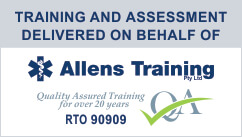First Aid and CPR Safety Tip – Sydney Northern Beaches
First Aid Course. Book your training today. Nationally Recognised Certificate. Excellent Provider. Great Location. We Come to You.
Even though running isn’t a contact sport, injuries and accidents can happen. There are few things worse than a gravel-encrusted knee or a muscle cramp that takes you out of the game. But what do you do if you’re far from home with limited resources when they happen?
Here are eight first aid tips every runner should know about and carry with them, whether you’re just going out for three easy miles on back roads or you’re racing a 50K on the trails.
1. Clean Cuts and Scrapes Right Away
One wrong step can lead to an open cut that derails your run, and although it’s tempting to push through, you should tend to it first. “The best thing to do is stop the bleeding, and clean and protect the area,” says Katie Lawton, an exercise physiologist in Rehabilitation and Sports Therapy at the Cleveland Clinic.
Jacob Erickson, a sports medicine physician at the Mayo Clinic, agrees. “Make sure to clean the area as soon as you are able with hydrogen peroxide or warm, soapy water. If you only have a bottle of water, that water will suffice,” he says. “Use some type of antibiotic ointment or plain petroleum jelly to keep the area moist. You can keep it exposed if it’s not draining, otherwise keep it covered until the drainage stops or is better controlled.”
If you don’t have supplies readily available, Lawton suggests using a T-shirt—especially if the wound is gushing. “Tear off a piece of your shirt and tie it on the area for compression,” she says.
2. Don’t Pop Your Blisters
We know: It’s the most tempting thing in the world to pop a blister, but it’s best to leave it alone. “To cut or ‘pop’ the blister can increase infection risk,” says Patrick Lank, M.D., assistant professor of emergency medicine at the Northwestern University Feinberg School of Medicine.
Cleaning your blister off with water can also make things worse, according to Lawton, because the combination of sweat and water has the potential to create more blisters. Instead, use gel blister pads or petroleum jelly to speed up healing.
blistered feet
GETTY IMAGESMHJERPE
3. Stay Hydrated
It’s easy for newbies and even experienced runners to lose track of hydration as factors like heat and humidity change. “Severe dehydration can cause lightheadedness, loss of consciousness, and confusion,” Lank says. “If you feel you are becoming dehydrated, it’s best to stop running, rehydrate, and give yourself time.”
You may also experience muscle cramps if you’re dehydrated, Lank adds. If this happens, Corey Wencl, L.A.T., athletic trainer at the Mayo Clinic, suggests you stop running and stretch the muscle out or massage it for some relief.
To prevent dehydration, Lawton recommends having salt or electrolyte tablets on hand—they’re easy to add to your water bottle. However, “be aware that some gel packets have caffeine, which is also a diuretic, and could be a cause for dehydration,” she says.
man running in the desert
GETTY IMAGESADAM HESTER
4. Always Apply Sunscreen
Lawton says applying SPF prerun is a must. But if you do end up with a bad burn, your first move is to get out of the sun. “Find a way to properly cover up your skin or seek shade,” she says. If it’s too late, you can find sunburn relief with aloe vera spray with lidocaine. “Do not use petroleum jelly, as this can trap the heat in that the body is trying to release,” she says. Drinking a lot of water is also key because burns can increase your risk of dehydration, adds Lank.
5. Stock Your Car With Supplies
You can’t realistically carry every first aid product with you on your run, but make sure to keep a kit in your car. “Have a single-use ice pack or elastic bandage on hand for bad sprains,” Lawton says. You also can’t go wrong with some Band-Aids, blister pads, and chafing cream.
6. Run With a Friend
It may sound obvious, but running solo can be risky in case of an emergency. So if you plan to run a more remote route, ask a friend to go along, suggests Wencl. If not, you can utilize safety features in certain apps and phones to have a close friend or family member keep track of you during your run.
Female runners
GETTY IMAGESWESTEND61
7. Let Someone Know Your Plans
When running solo, be sure to share your specific plans. “Let family members know what time to expect you home by and the location where you will be running, especially if you don’t like running with your phone,” Lawton says.
8. Know When to Call 911
“If you lose consciousness while running, you should immediately seek medical attention,” Lank says. The same goes for a friend or running partner. “And if you develop abnormal chest pain or difficulty breathing, you should immediately stop running call 911 to be brought to the hospital for evaluation.”
